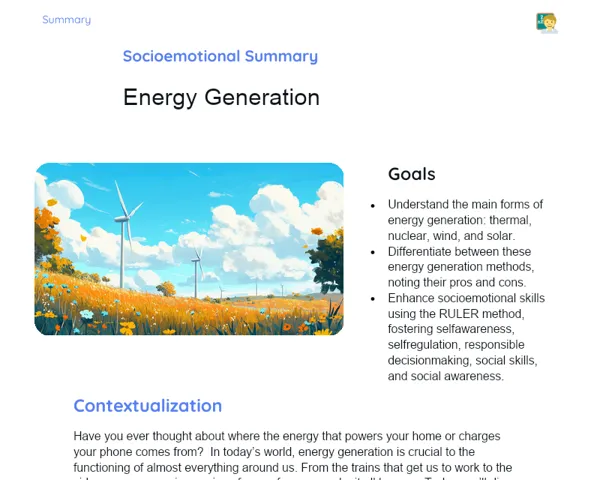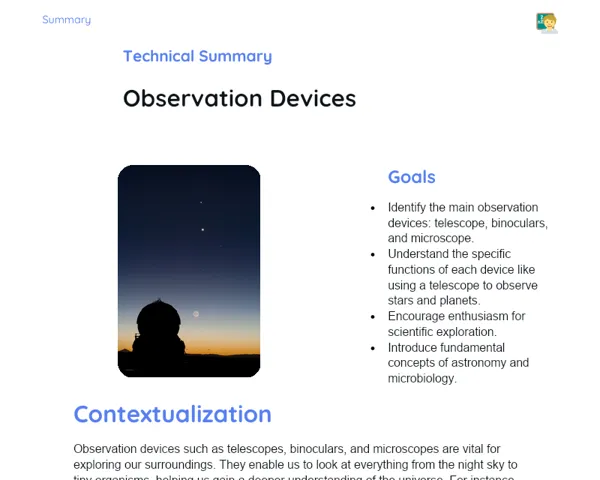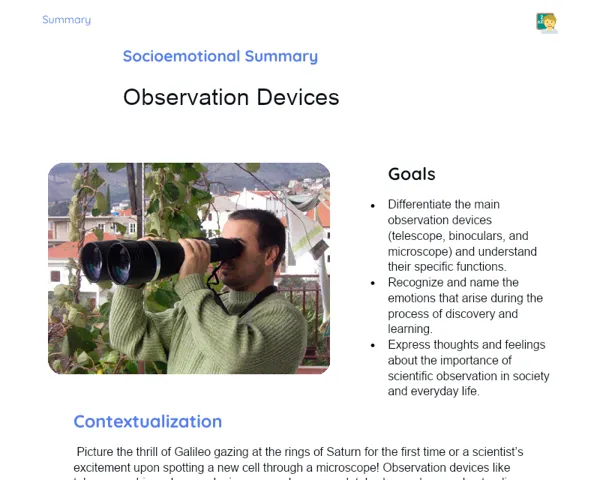Summary Tradisional | Basic Electrical Circuits
Contextualization
Electric circuits are at the heart of nearly all the electronic gadgets we use in our daily lives, from lighting bulbs and powering mobile phones, to running computers and home appliances. They enable the flow of electricity, which is essential for these devices to operate. Grasping the fundamentals of electric circuits is vital for understanding the technology that surrounds us and for troubleshooting everyday issues related to electricity.
The study of electric circuits really took off in the late 18th century, starting with Alessandro Volta's invention of the voltaic pile—this was the world's first device capable of generating a consistent electric current. This breakthrough laid the groundwork for modern batteries and other crucial components in electric circuits. Nowadays, knowledge of these circuits is applied across various fields such as electrical engineering, electronics, and even in construction, where it’s key for setting up both residential and industrial electrical systems.
To Remember!
Electric Circuit
An electric circuit is a closed loop that permits the flow of electric current. If this loop isn't complete, the current won't flow, and the circuit will be non-functional. The path can comprise different components that manage and use the electric current in various ways. Understanding electric circuits is fundamental, as it underpins how electricity is harnessed to do work, like lighting a bulb or powering a device.
Circuits can be as simple as a battery and a bulb or as complex as those found in computers and other high-tech devices. Regardless, the core principle remains the same: there must be a closed path for electric current to travel.
Additionally, circuits can be categorised into series and parallel arrangements depending on how the components are linked. In a series circuit, components are connected sequentially, causing the current to flow through each one in order. In a parallel circuit, components are connected in separate paths allowing current to flow through multiple routes at once.
-
Closed loop that allows the flow of electric current.
-
Can range from simple setups to complex systems.
-
Classified into series and parallel circuits.
Battery
The battery serves as the power source within an electric circuit. It provides the necessary voltage for electric current to circulate through the circuit. Without a battery or another power source, there's no force to move electrons, meaning electric current won't flow.
Batteries function by converting chemical energy into electrical energy. Inside a battery, a chemical reaction occurs between the materials of the anode and cathode, generating a voltage difference between the terminals. When these terminals are linked through a circuit, electric current flows from the negative terminal (cathode) to the positive terminal (anode).
There are various types of batteries, including lead-acid, lithium, and alkaline batteries. Each type has specific features and applications. Choosing the right battery depends on the circuit’s requirements, like the energy needed and how long it will run.
-
Power source that supplies the necessary voltage.
-
Converts chemical energy into electrical energy.
-
Different types of batteries with unique properties.
Resistor
A resistor is a component that restricts the flow of current within a circuit. It does this by offering resistance to the electric current, converting some of the electrical energy into heat. If resistors were absent, excessive current could damage other circuit components or even cause fires.
The resistance of a resistor is measured in ohms (Ω) and can be either fixed or variable. Fixed resistors maintain a constant resistance value, while variable resistors, like potentiometers, allow adjustments to be made.
Resistors play a crucial role in numerous circuits as they help manage the amount of current and appropriately distribute voltage. They find applications ranging from basic voltage dividers to complex control circuits.
-
Limits the current flowing in the circuit.
-
Converts electrical energy into heat.
-
Can be either fixed or variable.
Conductors
Conductors are materials that facilitate the passage of electric current between the various components of a circuit. Typically made from metals like copper or aluminium, they possess low electrical resistance which allows current to flow more freely.
Besides conducting current, conductors need to be insulated to avert short circuits and protect users from electric shocks. Insulation is usually done with non-conductive materials, such as plastic or rubber.
The length and thickness of conductors can influence the circuit's resistance. Thicker wires generally have lower resistance, enabling more current to flow, while thinner ones have higher resistance. It's vital to select the right type and thickness of wires to ensure that the circuit operates safely and efficiently.
-
Facilitates the flow of electric current between components.
-
Made from low-resistance metals like copper.
-
Insulated to prevent short circuits and enhance safety.
Key Terms
-
Electric Circuit: Closed loop that enables electric current flow.
-
Battery: Power source providing the necessary voltage.
-
Resistor: Component limiting current within the circuit.
-
Conductors: Materials allowing electric current passage.
-
Ohm's Law: Relationship between voltage, current, and resistance in a circuit (V = I x R).
-
Electric Current: Flow of electrons through a conductor.
-
Voltage: Difference in electric potential between two circuit points.
-
Resistance: Opposition to the flow of electric current in a material.
Important Conclusions
In this lesson, we’ve covered the key concepts pertaining to electric circuits, including what defines them and why they are important, plus the fundamental components such as batteries, resistors, and conductors. Understanding how these components interact within an electric circuit is crucial for realising how our everyday electronic devices function.
We also delved into Ohm's Law, a key principle for calculating voltage, current, and resistance in electric circuits. Mastery of this law helps tackle practical issues and clarifies how different components affect circuit performance. Through hands-on examples, we demonstrated how these theoretical ideas manifest in real-world situations.
The value of understanding electric circuits extends beyond the classroom; it assists in diagnosing common problems and can spark interest in technology and engineering careers. Grasping these basic principles is a vital stepping stone for anyone keen to explore electronics and electrical engineering, both of which significantly shape our modern lives.
Study Tips
-
Go over the essential concepts of electric circuits, including circuit definitions, core components, and Ohm's Law. Jot down detailed notes and create diagrams to better visualise connections.
-
Practice solving problems by applying Ohm's Law in various contexts. Use exercises from your textbooks or online resources to bolster your understanding.
-
Try your hand at building simple circuits using assembly kits or online simulators. Practical experience will reinforce your theoretical knowledge and enhance your grasp of circuit dynamics.



